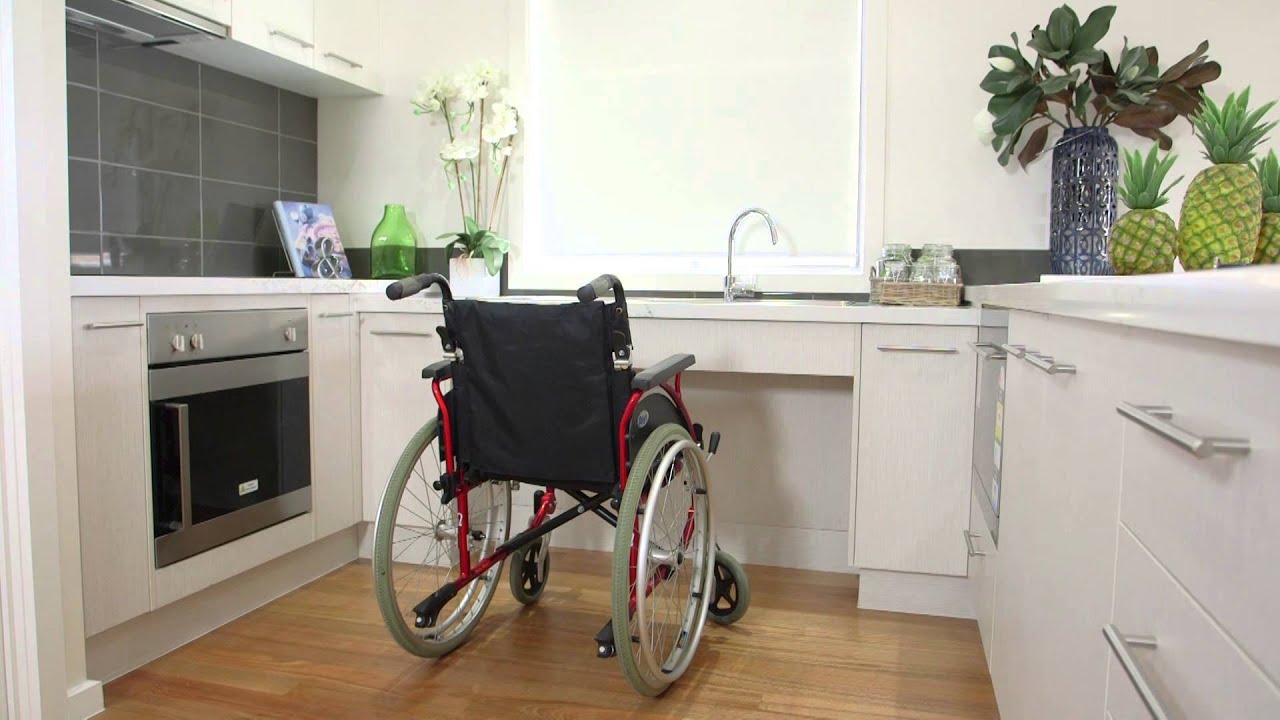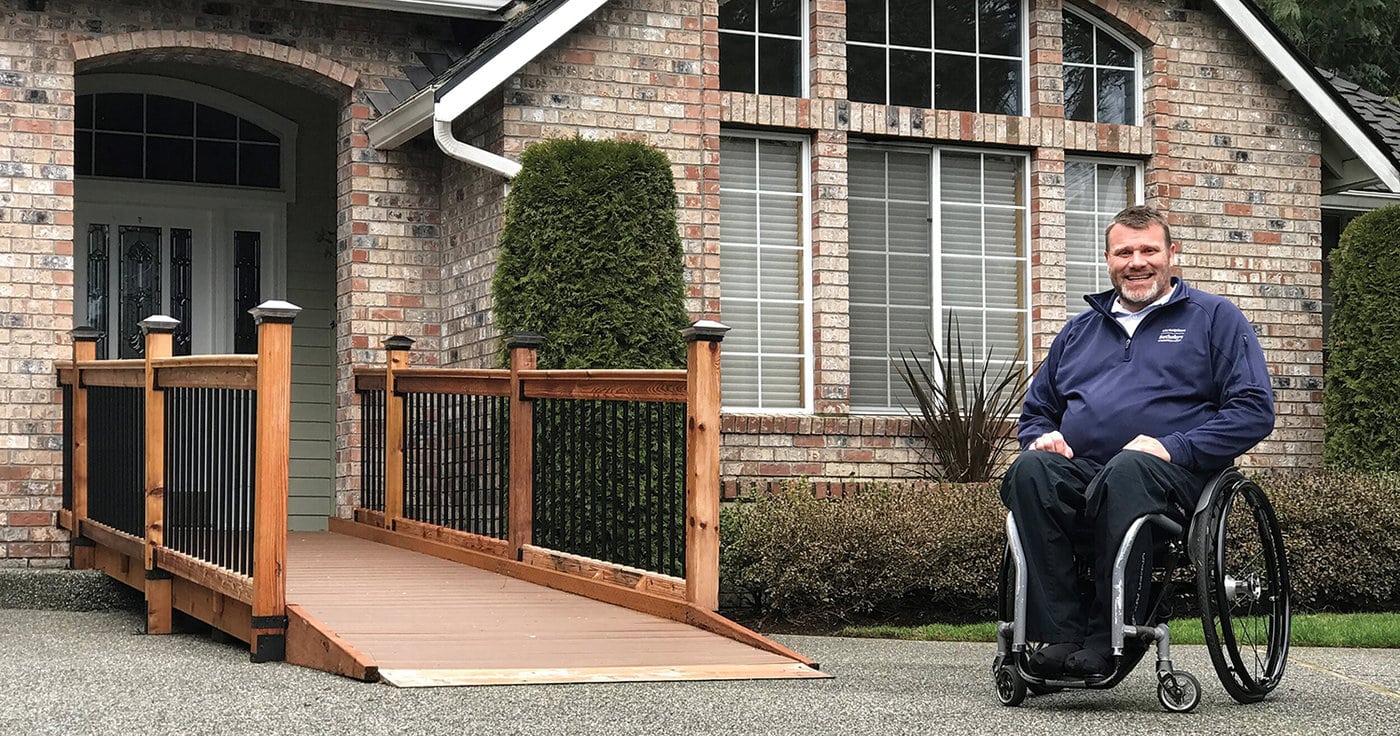New research has revealed that building more wheelchair user homes for disabled people, from children to adults over 66, could save the public purse millions over a 10 year period.

In research commissioned by Habinteg Housing Association, the London School of Economics (LSE) and Political Science Housing and Communities research group interviewed people from three household type and analysed publicly available data to discover the value to society and the economy of building new wheelchair user homes.

The research revealed that the additional cost of building a wheelchair user home – instead of an accessible & adaptable home[i] – for a typical disabled adult of working age is around £22,000, with the potential ten-year financial and social benefit to the individual and the public purse being around £94,000.
For a household with a child who is a wheelchair user, the ten-year economic and social benefit is around £66,000, with an additional cost of around £26,000 to build a new wheelchair user home.
For a typical older wheelchair user household, the ten-year financial and social benefit is around £101,000, with a new wheelchair user home costing around an additional £18,000.

The positive impact on the public purse for each household type benefits both national and local bodies. For local authorities, savings amount to around: £1,700 per year for a household with a disabled child; £4,800 for a household of working age, and £9,200 for a later year’s household. The NHS also benefits by hundreds of pounds per household per year.
Meanwhile, savings to government through tax, national insurance and a reduced welfare spend is £700 for a household with a disabled child, and £2,400 for a working age adult household (£0 for later years’ households).
New wheelchair accessible properties (known as M4(3) in building regulations) are built when Local Plans set a target within their housing policies. At present of England’s 325 Local Plans, 162 have no target included for such homes.

Habinteg’s CEO, Nick Apetroaie, said: “This new research reveals a clear and powerful economic case for wheelchair accessible homes that must not be ignored. Behind the numbers we must not forget that the shortage of wheelchair accessible properties has a profound negative impact on people’s daily lives. It’s not acceptable for society to expect wheelchair users and their families to ‘make do’ in homes which limit their independence, dignity and overall life opportunities.
“We’re calling on the government and relevant agencies to set a clear requirement for every local authority to create a robust plan for new wheelchair accessible homes. Without this we will be literally building inequality into housing stock, not only at great personal cost to individuals and households but also, in the medium to long term, to the public purse, too.”
The research identifies eight key social benefit areas that new wheelchair user homes can bring to individuals and society, as well as the government and NHS. The top four being:
Removing/reducing the cost of care assistance in the home
Adult care services represent a major cost for local authorities, so even a small reduction in that demand is important in reducing expenditure on these services.
Higher disposable income
Living in a wheelchair user home can increase the likelihood of an individual being in work, which can increase a household’s disposable income. For families with disabled children, a suitable home could help a parent access part-time work.
Reduced welfare benefits & greater contribution to tax and National Insurance
Being able to work also reduces dependence on welfare benefits, as well as contributing to the public purse through higher tax & national insurance contributions.
Improved confidence & independence
A home that enables a wheelchair user to be more independent, get around safely and easily, can boost their confidence.
Interviewees talked about living rather than existing once in a home that was accessible and met their needs. For young adult wheelchair users, a wheelchair user home can also support their transition out of the family home and into an independent life.
One working age interviewee in his 20s, Joe (a pseudonym) spoke of how moving out of his parents’ home, into a wheelchair user home, increased his independence and self-esteem.
“It’s fantastic and it’s been fantastic since I’ve moved in it… it enables me to live independently… to work and live my life… I’m sure that if I was still living at home in my 30s, much as I love my parents, I wouldn’t see a future and beyond living with them,” he said.
“I’ve always been very grateful that I’m in a job because I know that I probably wouldn’t be able to afford the mortgage if I weren’t in a job. I don’t think benefits would be enough to cover it,” he added.

LSE Visiting Senior Policy Fellow, Dr Bert Provan, said: “Our research shows that setting a minimum level of building of new homes to meet the needs of wheelchair users would bring life enhancing benefits to individual lives, as well as potential savings to the public purse.”
As a result of this report, Habinteg is calling on government to:
1) Revise the National Planning Policy Framework to explicitly require all local plans to include a specific policy and target for new wheelchair accessible (M4(3) homes, and where no local target is set to require 10% of new homes to meet the standard.
2) Require the Planning Inspectorate to reject any local plan that omits a policy statement and target for M4(3) homes.
3) Ensure that Homes England prioritises funding for developments that provide new wheelchair accessible homes across a range of house types and tenures.
4) Implement the planned new regulatory baseline for accessible homes and ensure that all Local Authorities enforce the requirements to build to the M4(2) accessible and adaptable standard. This will provide greater accessible and adaptable housing choice for all.

The full summary report, Living not existing: The social value of wheelchair user homes, is available at www.habinteg.org.uk
[i] Building Regulations M4(2) Accessible and Adaptable home standard is an inclusive housing standard that makes homes more flexible to the needs of occupants over time. This standard is set to become the new regulatory baseline for all new homes once government plans announced in July 2022 are implemented.
Contact:
Jess Mackinnon, Media & Comms Officer, jmackinnon@habinteg.org.uk , 07761 055 981
Sharon Herbert, Interim Head of Communications & Engagement, sherbert@habinteg.org.uk, 07592 374 158
Since 1970, Habinteg Housing Association’s thoughtful designs have enabled tenants to achieve and sustain independent living. Habinteg has over 3,300 homes across 86 local authorities. One in three of our properties are designed specifically for wheelchair users, and the majority of our homes are built to an accessible or adaptable standard. Habinteg wants communities to include disabled people and offer places to live that meet their needs, supporting them with the highest levels of independence, choice and control over daily life. We champion inclusion by providing and promoting accessible homes and neighbourhoods that welcome and include everyone, using our expert knowledge to inspire and influence decision makers.

